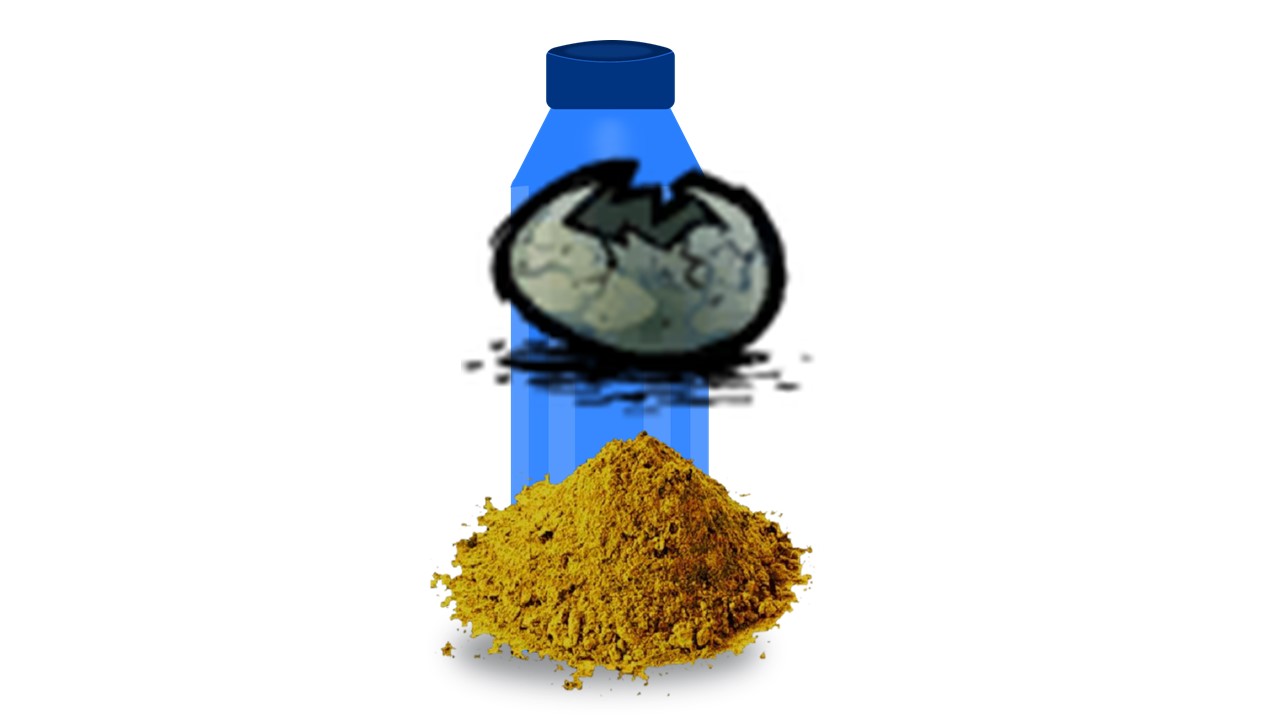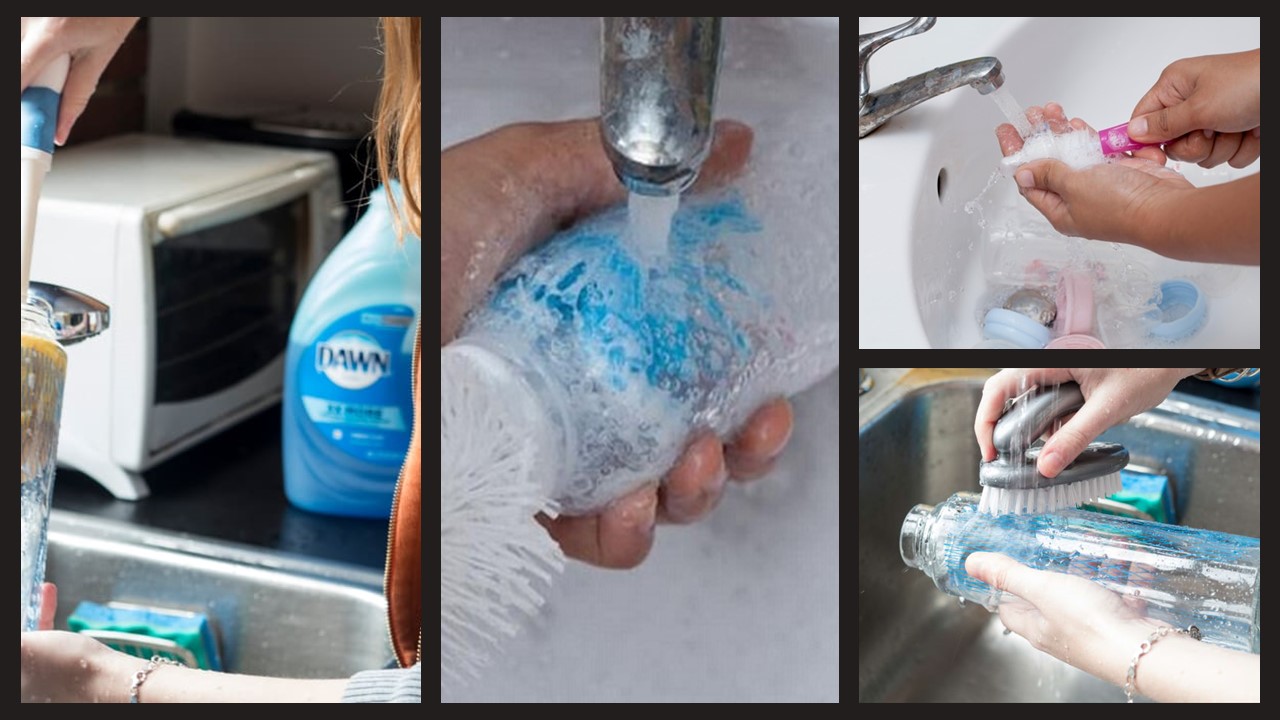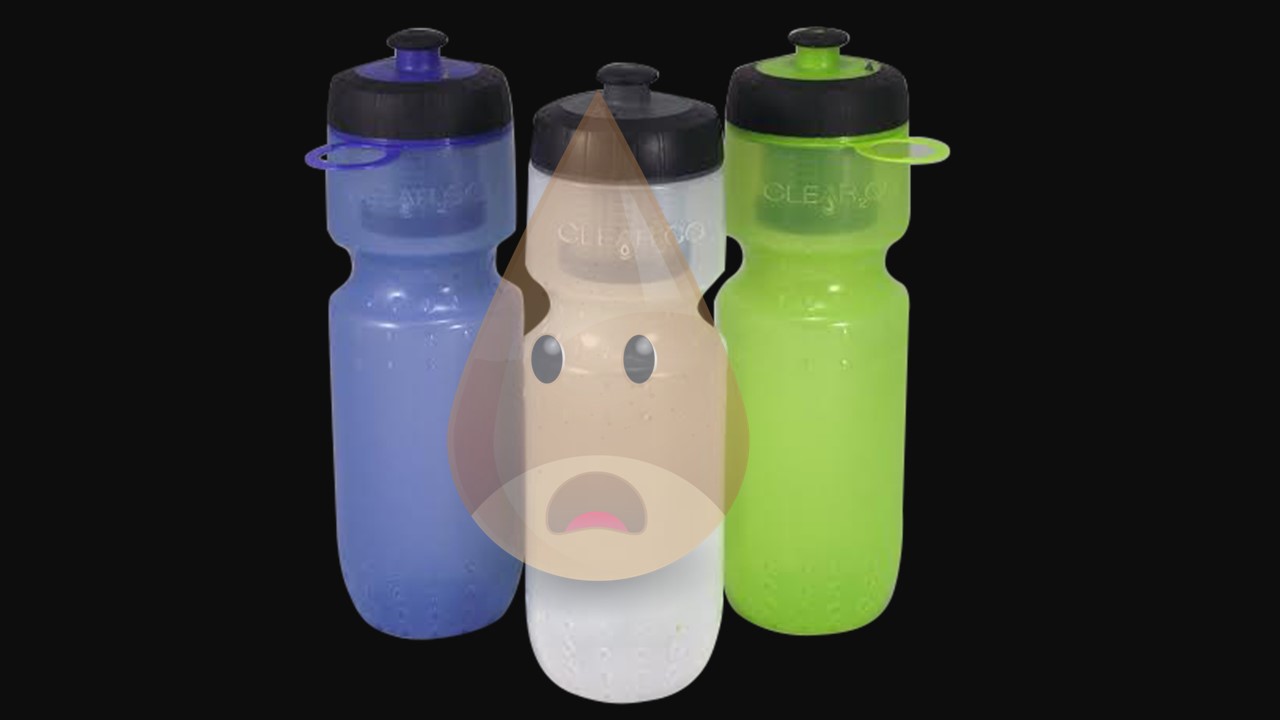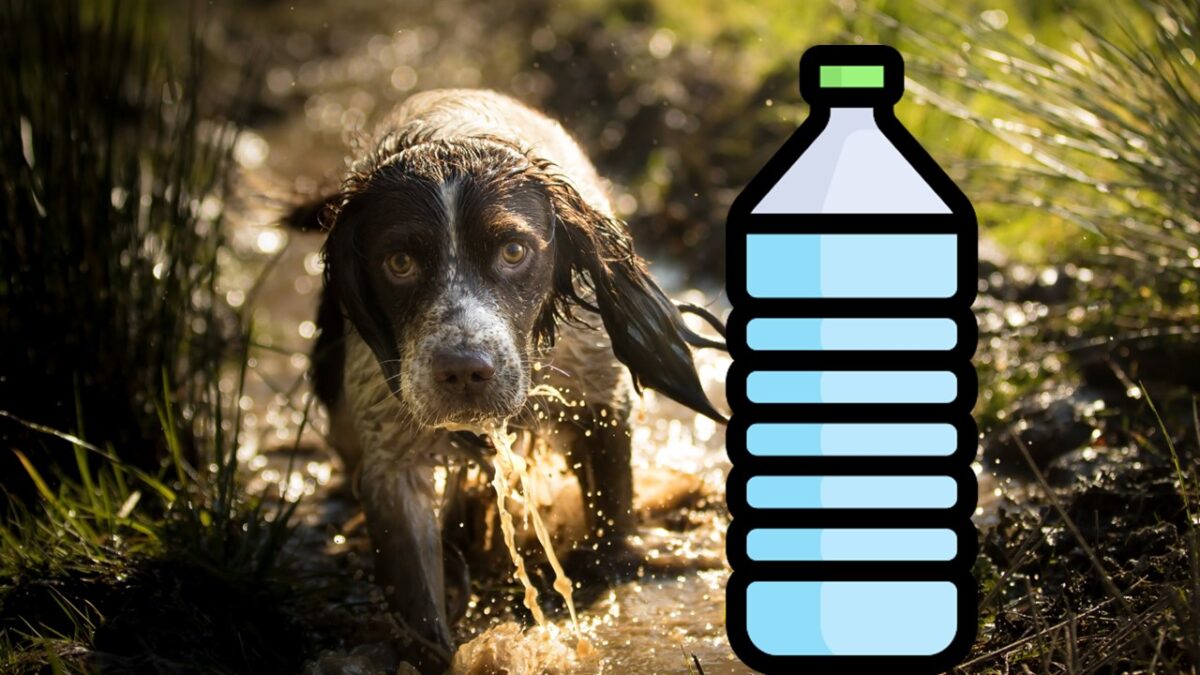Why Does My Water Bottle Smell Like Mildew: Definitive Solutions
Are you looking for an answer to “Why does my water bottle smell like mildew?” Do you ever get a whiff of a foul odor coming from your water bottle? That distinct mildew smell can be both off-putting and concerning.
Not only is mildew smell unpleasant, but it can also pose health risks if left unchecked. Research has shown that mold and mildew can cause respiratory issues and allergic reactions, making it crucial to address the issue as soon as possible.
Fortunately, there are ways to eliminate the mildew smell from your water bottle and prevent it from happening again. In this article, we will dive deeper into the root causes of the odor and provide practical tips on how to get rid of it for good. Don’t let a smelly water bottle stop you from staying hydrated and healthy.
Why Does My Water Bottle Smell Like Mildew – Common Causes
Mildew smell in water bottles can be caused by several factors. Some of the most common causes include:
1. Inadequate Cleaning
If you don’t clean your water bottle regularly or thoroughly enough, bacteria and mold can grow inside the bottle, leading to a mildew smell. Paying attention to hard-to-reach areas of the bottle, such as the mouthpiece and cap, is particularly important to prevent mildew smell.
2. Exposure To Moisture
Exposing your water bottle to moisture, such as if you leave it in a damp gym bag or car, it can promote bacteria growth and lead to mildew smell. Moisture can also accumulate in hard-to-reach areas of the bottle, such as the bottom, and promote bacteria growth.
3. Long-Term Storage
Storing your water bottle for an extended period without cleaning it or allowing it to air dry properly may cause bacteria and mold can grow inside the bottle, leading to a mildew smell.
4. Using Sweetened Or Flavored Drinks
If you use sweetened or flavored drinks in your water bottle, the sugar can promote bacteria growth and lead to a mildew smell. It’s important to clean your water bottle thoroughly after using sweetened or flavored drinks to prevent bacteria growth.
5. Drinking From The Bottle Directly
By drinking directly from the bottle, you introduce bacteria from your mouth into the bottle, which can lead to bacteria growth and a mildew smell over time.
By understanding these common causes of mildew smell in water bottles, you can take steps to prevent them and ensure that your water bottle remains clean and hygienic.
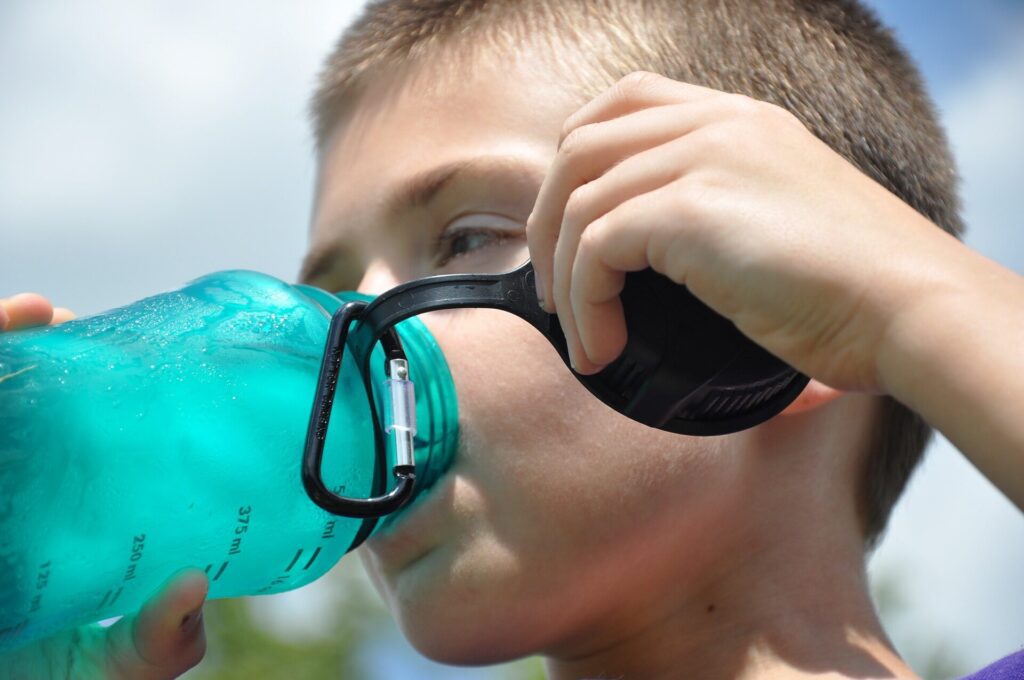
Health Risks Associated With Mildew Smell In Water Bottles
Mildew smell in your water bottle can pose several potential health risks if left unchecked. When mold and bacteria grow inside a water bottle, they can release toxins that can be harmful to your health.
Here are some of the potential health risks associated with drinking from a moldy water bottle:
1. Respiratory issues: Mold and mildew can cause respiratory issues such as wheezing, coughing, and shortness of breath. This is especially true for people who are allergic to mold or have underlying respiratory conditions such as asthma.
2. Allergic reactions: Exposure to mold and mildew can cause allergic reactions, including skin rashes, itching eyes, and sneezing. Some people may also experience more severe reactions, such as anaphylaxis.
3. Digestive issues: Ingesting mold and mildew can cause digestive issues such as nausea, vomiting, and diarrhea. This is especially true for people who have weakened immune systems.
4. Headaches: Exposure to mold and mildew can cause headaches, especially in people who are allergic to mold.
5. Infections: In some cases, mold and mildew can cause infections, especially in people who have weakened immune systems. These infections can be serious and may require medical treatment.
It’s important to note that not all mold and mildew are harmful to human health, and some people may be more sensitive to mold than others.
However, if you notice a mildew smell in your water bottle, it’s important to take steps to eliminate it to prevent potential health risks. This includes cleaning your water bottle thoroughly and storing it in a cool, dry place to prevent mold and bacteria growth.
How To Remove Mildew Smell From Water Bottles
If you’ve noticed a mildew smell in your water bottle, there are several methods you can use to eliminate it. Here are some practical tips to help you get rid of the odor:
1. Use White Vinegar
Vinegar is a natural disinfectant that can help eliminate mildew smell from your water bottle. Simply add at least 1 tablespoon of white vinegar to 1 cup of water, pour the solution into the water bottle, let it sit for a few hours, shake the bottle thoroughly and then rinse thoroughly. Air dry it thoroughly.
2. Try Baking Soda
Baking soda is another natural remedy that can help eliminate mildew smell from your water bottle. Simply sprinkle 2 teaspoons of baking soda into your water bottle, fill it with water, and let it sit for a few hours. Shake the bottle very well and rinse thoroughly afterward. Air dry it thoroughly.
3. Use A Cleaning Tablet
You can also use commercially available cleaning tablets specifically designed for water bottles. These tablets are typically effervescent and work to eliminate odors and bacteria. Simply drop the tablet into your water bottle, fill it with water, and let it sit for the recommended amount of time before rinsing.
Air dry the bottle before storing it.
4. Use A Bottle Brush
A bottle brush can help you reach all the nooks and crannies of your water bottle, ensuring that you’re able to clean it thoroughly. Use a bottle brush with warm soapy water to scrub the inside of your water bottle, paying special attention to areas that may be prone to bacteria growth, such as the mouthpiece and cap.
5. Use A Dishwasher
Some water bottles are dishwasher safe, so you can simply pop them in the dishwasher for a thorough cleaning. Be sure to check the manufacturer’s instructions to see if your water bottle is dishwasher safe before attempting this method.
Choosing The Right Water Bottle
Product Image | Product Name | Key Features | Rating | Price |
| ||||
| ||||
| ||||
| ||||
| ||||
| ||||
| ||||
| ||||
| ||||
|
Tips For Preventing Mildew Smell In Water Bottles
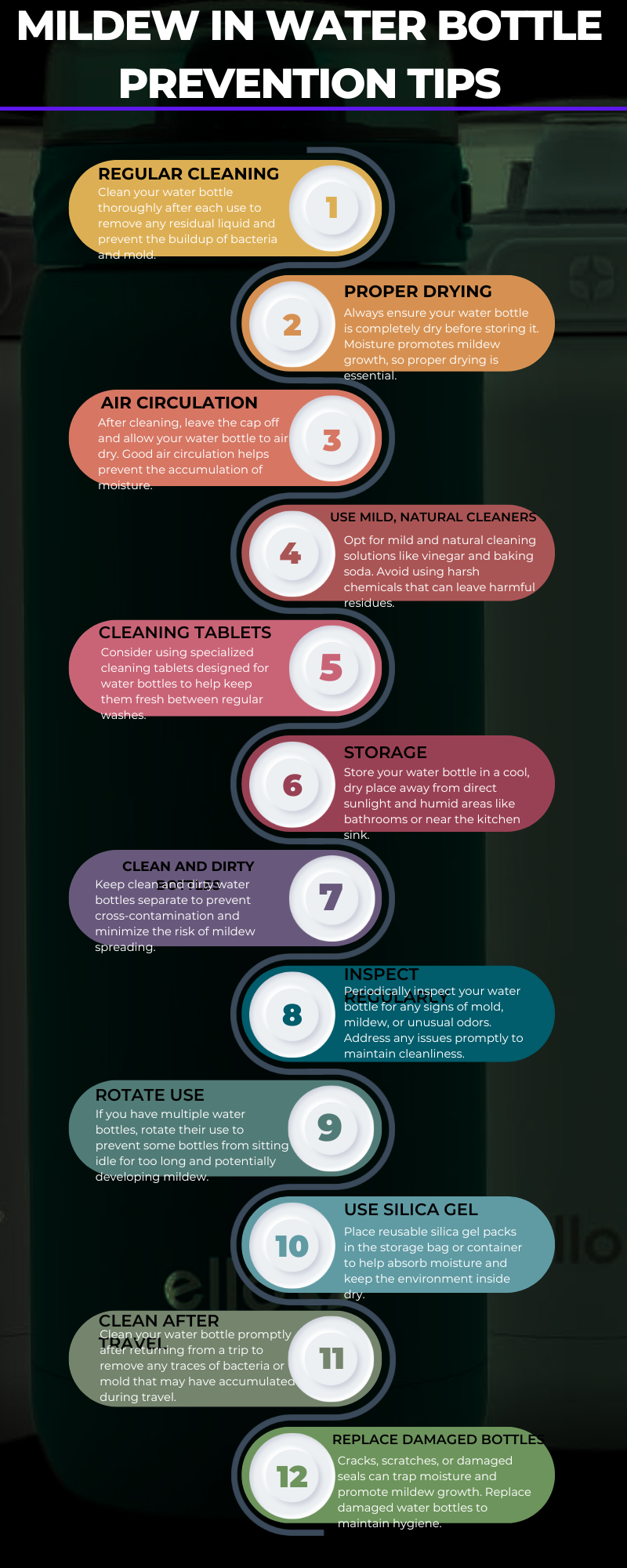
Preventing mildew smell in your water bottle is key to ensuring that it remains a safe and healthy source of hydration. Here are some best practices to help you prevent mildew smell in your water bottle:
1. Clean your water bottle regularly: Wash your water bottle thoroughly after each use with warm soapy water or a cleaning solution specifically designed for water bottles. Pay special attention to hard-to-reach areas such as the mouthpiece, bottom and cap.
2. Dry your water bottle completely: Make sure your water bottle is completely dry before storing it away. Use a clean towel or air dry it upside down to ensure that all moisture is removed.
3. Store your water bottle in a cool, dry place: Avoid storing your water bottle in warm or humid environments, as this can promote bacteria growth. Instead, store it in a cool, dry place away from direct sunlight.
4. Use a bottle brush: Use a bottle brush to clean hard-to-reach areas of your water bottle, such as the bottom and sides. This will ensure that all areas of your water bottle are cleaned thoroughly and prevent bacteria and mold growth.
5. Consider purchasing a water bottle with anti-microbial properties: Some water bottles are designed with anti-microbial properties that help prevent bacteria growth. If you’re particularly concerned about the mildew smell, consider investing in a water bottle with these properties.
Following these tips can help you prevent the mildew smell in your water bottle and ensure that it remains a safe and healthy source of hydration. Remember to clean your water bottle regularly, dry it thoroughly, and store it in a cool, dry place to prevent bacteria and mold growth.

How To Avoid Getting Sick From Mildew In Water Bottles (Why Does My Water Bottle Smell Like Mildew)
To avoid getting sick from mildew in water bottles, follow these preventive measures and good hygiene practices:
- Regular Cleaning: Clean your water bottle thoroughly and regularly, preferably after each use. Use mild soap and warm water or use a bottle brush to reach all the nooks and crannies. Pay special attention to the cap and the mouthpiece, as these areas can trap moisture and promote mildew growth.
- Thorough Drying: After cleaning, ensure your water bottle is completely dry before storing it. Moisture promotes mildew growth, so leaving your bottle damp can lead to the development of mildew and bacteria.
- Air Circulation: Allow your water bottle to air dry with the cap and mouthpiece removed. This helps to improve air circulation, reducing the chances of mildew formation.
- Store Properly: When not in use, store your water bottle in a cool, dry place with the cap off. Avoid leaving it in areas with high humidity, such as a gym bag or a car on a hot day.
- Use Vinegar or Baking Soda: Occasionally, use a mixture of vinegar and water or baking soda and water to clean your water bottle. These natural substances can help remove odors and inhibit mildew growth.
- Avoid Dishwasher and Harsh Chemicals: Check the manufacturer’s instructions to determine if your water bottle is dishwasher-safe. Some bottles can be damaged by the high heat of dishwashers or by harsh cleaning chemicals. Stick to mild soap or natural cleaning solutions to be safe.
- Replace Regularly: If you notice persistent mildew odors or stains that don’t go away with cleaning, it might be time to replace your water bottle. Over time, bottles can develop microscopic scratches that provide a breeding ground for bacteria and mildew.
- Use a Water Bottle with Anti-Microbial Properties: Consider investing in a water bottle made from materials with inherent anti-microbial properties. Some materials, like stainless steel, are naturally more resistant to bacterial growth.
- Personal Use Only: Avoid sharing your water bottle with others to prevent the spread of bacteria and germs.
- Monitor the Water Quality: If you notice a persistent bad taste or foul smell from the water stored in your bottle, it might be time to investigate the source of the issue. It could be related to the water source itself rather than the bottle.
- Inspect Your Bottle Regularly: Periodically inspect your water bottle for any signs of mold, mildew, or other contaminants. Catching and addressing the issue early can prevent health problems down the line.
Impact Of Mildew On Taste (Why Does My Water Bottle Smell Like Mildew)
Mildew, which is a type of mold, can have a significant impact on the taste of the water or beverages stored in a bottle. When mildew grows inside the bottle, it releases spores and produces metabolites that can impart unpleasant flavors and odors to the liquids.
Here’s how mildew affects the taste of stored beverages and why maintaining a clean water bottle is essential for an enhanced drinking experience:
1. Foul Odor and Taste: The presence of mildew in a water bottle can lead to a musty or earthy smell. When you drink from the contaminated bottle, you may notice a similar unpleasant taste, which can be off-putting and ruin the experience of drinking water or any other beverage.
2. Bitter or Metallic Notes: In some cases, mildew growth can result in the water or beverages developing bitter or metallic notes. These flavors are not natural to the liquids and can be particularly displeasing, making it difficult to enjoy the taste.
3. Cross-Contamination: If a water bottle has been used to store beverages with strong flavors, such as coffee, juice, or sports drinks, and isn’t properly cleaned, mildew can interact with the residual flavors, leading to a strange and undesirable amalgamation of tastes.
4. Unhealthy or Unsafe Consumption: Mildew, being a form of mold, can harbor harmful bacteria and allergens. Consuming beverages from a contaminated bottle might expose you to these microorganisms, potentially leading to health issues.
5. Reduction in Hydration: When the taste of water or beverages is negatively affected by mildew, people may be less inclined to drink as much as they should. This can result in reduced hydration levels, leading to health problems related to dehydration.
Common Mistakes to Avoid (Why Does My Water Bottle Smell Like Mildew)
Here are common mistakes to avoid that can contribute to the development of a mildew smell in your water bottle:
- Leaving the Cap On When Wet: Keeping the cap on your water bottle while it’s still wet can trap moisture inside, creating a favorable environment for mildew and bacteria to grow. Always remove the cap after use and allow the bottle to dry thoroughly.
- Not Drying the Bottle Properly: Inadequate drying is a significant contributor to mildew development. Even a small amount of moisture left in the bottle can lead to the growth of mold and bacteria. Always ensure your water bottle is completely dry before storing it.
- Storing a Dirty Bottle: If you store your water bottle without cleaning it first, any residue from beverages or food particles can contribute to the development of a mildew smell. Always clean your bottle before storage, even if you plan to use it again soon.
- Using Strong Chemicals for Cleaning: Harsh chemicals, like bleach or strong disinfectants, can leave harmful residues in your water bottle. These residues can affect the taste of your beverages and may not be safe for consumption. Stick to mild soap or natural cleaning solutions.
- Neglecting Hard-to-Reach Areas: Some water bottles have intricate designs or hard-to-reach areas that can trap moisture and become breeding grounds for mildew. Use a bottle brush or a cleaning tool specifically designed for water bottles to reach all corners and crevices.
- Using the Bottle for Other Beverages Without Cleaning: If you use your water bottle for beverages other than water (e.g., juice, smoothies, or sports drinks), make sure to clean it thoroughly after each use. Sugary or acidic residues can promote the growth of mold and bacteria.
- Leaving the Bottle in Direct Sunlight: Leaving your water bottle in direct sunlight for extended periods can create a warm and humid environment inside, ideal for mold and mildew growth. Store your bottle in a cool, shaded place when not in use.
- Sharing Water Bottles: Sharing water bottles can transfer germs and bacteria from one person to another, potentially leading to mildew development. Keep your water bottle for personal use only.
- Not Cleaning the Cap and Mouthpiece: The cap and mouthpiece of your water bottle are frequent contact points with your mouth, making them susceptible to bacterial growth. Pay special attention to cleaning these areas thoroughly.
- Using Damaged Bottles: Cracks, scratches, or damaged seals can trap moisture and allow bacteria to thrive. Inspect your water bottle regularly for any signs of wear and tear, and replace it if needed.
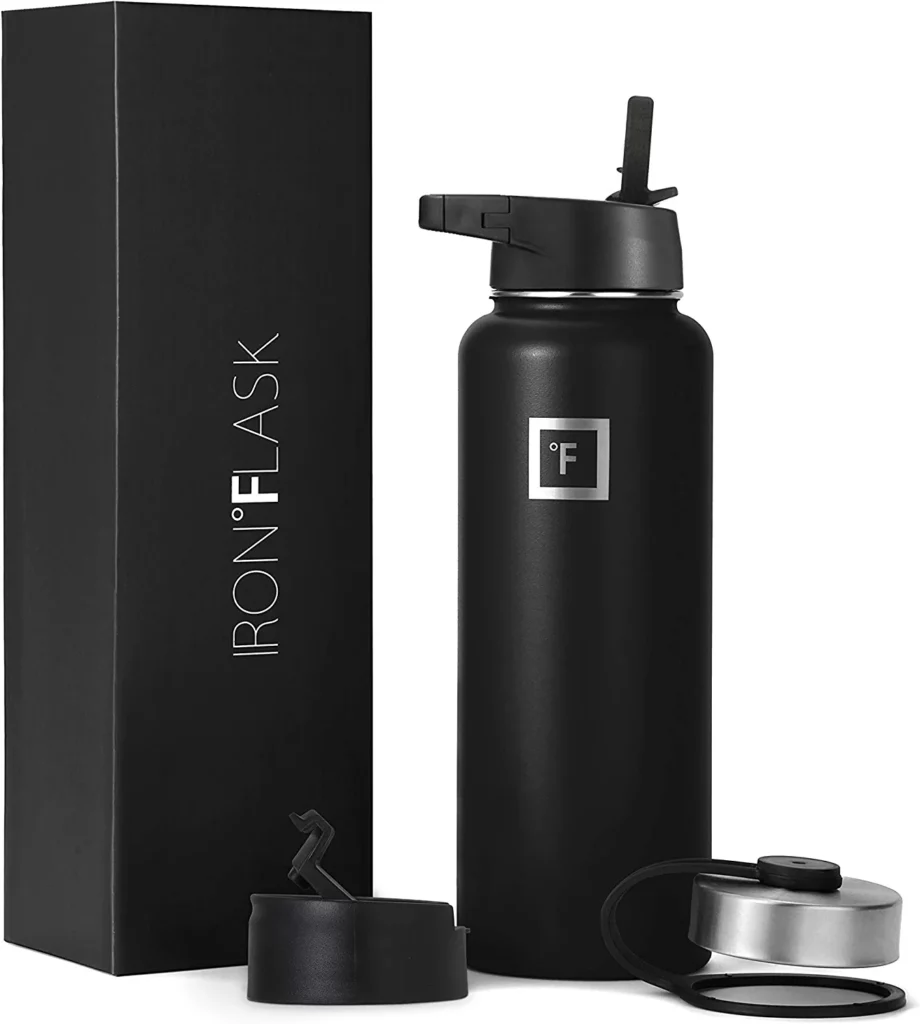
Water Bottle Cleaning Frequency To Avoid Mildew Smell (Why Does My Water Bottle Smell Like Mildew)
The optimal cleaning schedule for your water bottle depends on several factors, including usage frequency, the type of beverage you use, and the environmental conditions it’s exposed to. Here are some general guidelines to maintain the freshness and hygiene of your water bottle:
1. Daily Cleaning (High Usage or in Warm Environments)
Daily Use: If you use your water bottle daily and it’s exposed to warm or humid conditions, it’s best to clean it daily. Daily cleaning helps prevent the growth of bacteria and mold, especially when the bottle is constantly exposed to moisture and warmth.
2. Alternate Day Cleaning (Moderate Usage and Average Temperatures)
Moderate Use: If you use your water bottle every other day or moderately during the week, consider cleaning it every two days or on alternate days. This schedule ensures that any remaining water or beverage residue doesn’t become a breeding ground for bacteria.
3. Twice a Week Cleaning (Infrequent Use and Cooler Temperatures)
Infrequent Use: For water bottles that are used infrequently, such as only a couple of times a week, cleaning twice a week should suffice. If the bottle is kept in cooler environments, it’s less likely to develop mildew quickly.
4. Weekly Cleaning (Minimal Use or for Emergency)
Minimal Use: If you only use your water bottle occasionally or keep it as an emergency backup, cleaning it once a week after should be sufficient. Make sure to check for any signs of mold or mildew before use.
5. Environmental Factors
- Hot and Humid Environments: If you live in a hot and humid climate, you should clean your water bottle more frequently to counteract the ideal conditions for bacterial growth.
- Cold Temperatures: Cold temperatures can slow down bacteria growth, but it’s still essential to clean your water bottle regularly to maintain hygiene.
General Tips
- Use Daily or Reusable Bottle Cleaning Tablets: Some cleaning tablets are designed specifically for water bottles and can help keep them fresh between regular washes. Follow the instructions on the packaging.
- Inspect Before Use: Before using your water bottle, inspect it for any signs of mold, mildew, or unusual odors. If you detect anything concerning, clean it thoroughly before refilling.
Best Practices For Water Bottle Storage (Why Does My Water Bottle Smell Like Mildew)
Proper storage of water bottles is crucial to minimize the risk of mildew development and maintain their cleanliness and safety. Here are the best practices for storing water bottles at home, in the office, or during travel:
1. Clean Before Storage: Always clean your water bottle thoroughly before storing it, especially if it has been in use. Use mild soap and warm water to wash the bottle, and ensure it is completely dry before putting it away.
2. Keep the Cap Off: When storing a water bottle for an extended period, leave the cap off to allow for proper air circulation. This helps prevent the buildup of moisture, which can lead to mildew growth.
3. Choose a Cool, Dry Location: Store your water bottle in a cool, dry place away from direct sunlight and heat sources. Avoid storing it in areas with high humidity, such as bathrooms or near the kitchen sink.
4. Use a Storage Bag or Sleeve: Consider using a clean and breathable storage bag or sleeve to protect your water bottle from dust and dirt. Make sure the bag is washable and easy to maintain.
5. Avoid Clutter: Keep your water bottle in a designated spot to minimize contact with other objects and potential contaminants. This also makes it easier to find your bottle when you need it.
6. Separate Clean and Dirty Bottles: If you have multiple water bottles, keep the clean ones separate from the ones that need cleaning. This prevents cross-contamination and reduces the risk of mildew spread.
7. Don’t Overfill: Avoid filling your water bottle to the brim, especially if you plan to store it in a bag or backpack. Leaving a bit of space allows for air circulation and prevents spills.
8. Use a Water Bottle Stand or Holder: At home or in the office, consider using a water bottle stand or holder to keep your bottle upright and organized. This can also serve as a reminder to drink water regularly.
9. Check for Mold or Mildew Regularly: Inspect your water bottle periodically, even when in storage, for any signs of mold, mildew, or other contaminants. Address any issues promptly to ensure your bottle stays clean and safe.
10. Empty and Clean After Travel: If you’ve taken your water bottle on a trip, empty and clean it as soon as possible after returning home. Travel conditions may expose the bottle to different environments and germs.
11. Store Bottles Upright: When possible, store water bottles upright rather than on their sides. This helps prevent any remaining moisture from pooling in the cap area.
12. Use a Reusable Silica Gel Pack: Placing a reusable silica gel pack in the storage bag or container can help absorb moisture and keep the environment inside dry.
13. Rotate Use: If you have multiple water bottles, rotate their use to prevent some bottles from sitting idle for too long.
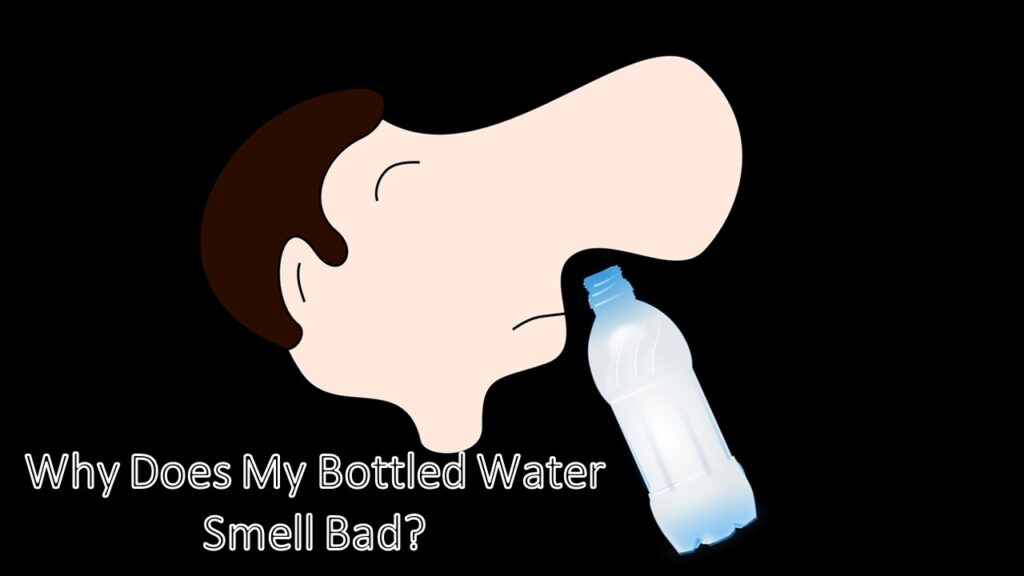
Why Does My Water Bottle Smell Even After Washing
There could be several reasons why your water bottle smells even after washing, including:
1. Bacteria growth: If your water bottle is not thoroughly cleaned or dried after each use, bacteria can grow inside the bottle and cause a foul odor.
2. Mold growth: If your water bottle is stored in a damp or humid environment, mold can grow inside the bottle and cause a musty smell.
3. Residue buildup: If you use your water bottle to store beverages other than water, such as juice or soda, residue from these drinks can build up inside the bottle and cause a smell.
4. Old age: Over time, water bottles can become old and deteriorated, which can cause them to develop an unpleasant odor.
To eliminate the smell from your water bottle, try thoroughly washing it with soap and warm water, and then sanitizing it using one of the methods mentioned earlier.
Be sure to let the bottle air dry completely before using it again, and store it in a cool, dry place. If the smell persists, it may be time to replace the bottle.
How To Remove Hard Water Stains From Water Bottles (Why Does My Water Bottle Smell Like Mildew)
There are several ways to remove hard water stains from a water bottle, and here are a few options:
1. Vinegar and Baking Soda Method:
- Mix 2 tablespoons of white vinegar and 1 2/3 cups of baking soda to make a paste.
- Apply the paste to the stained areas of the water bottle.
- Let the paste sit for 15-20 minutes.
- Use a scrub brush or bottle brush to scrub the stained areas.
- Rinse the water bottle thoroughly with warm water.
2. Lemon Juice and Baking Soda Method:
- Squeeze lemon juice into the water bottle until the stained areas are covered.
- Add a pinch of baking soda.
- Let the mixture sit in the bottle for at least an hour.
- Use a scrub brush or bottle brush to scrub the stained areas.
- Rinse the water bottle thoroughly with warm water.
3. Denture Cleaner Method:
- Fill the water bottle with warm water.
- Drop a denture-cleaning tablet into the water bottle.
- Let the tablet dissolve completely.
- Use a scrub brush or bottle brush to scrub the stained areas.
- Rinse the water bottle thoroughly with warm water.
4. Salt and Vinegar Method:
- Mix 1/4 cup of salt with 1/4 cup of white vinegar to make a paste.
- Apply the paste to the stained areas of the water bottle.
- Let the paste sit for 15-20 minutes.
- Use a scrub brush or bottle brush to scrub the stained areas.
- Rinse the water bottle thoroughly with warm water.
Remember to always rinse the water bottle thoroughly after cleaning to remove any residue from the cleaning solution.
How To Sanitize Water Bottles (Why Does My Water Bottle Smell Like Mildew)
To sanitize a water bottle means eliminating or reducing the number of harmful microorganisms (such as bacteria, viruses, and fungi) that may be present on the bottle’s surface or inside it.
Sanitizing a water bottle helps to ensure that it is safe to use and helps prevent the growth of harmful bacteria that could make you sick.
It is important to sanitize your water bottle regularly, especially if you use it frequently, as bacteria can build up over time. This is particularly important if you are using your water bottle to store beverages other than water, as sugary or acidic drinks can provide an ideal environment for bacteria to grow.
To sanitize water bottles, you can follow these steps:
1. Wash the water bottle with soap and warm water: Use mild dish soap and warm water to wash the bottle thoroughly, including the cap and any other removable parts. Rinse the bottle and cap well with clean water.
2. Use a sanitizing solution: You can use a bleach solution to sanitize the water bottle. Mix 1 teaspoon of bleach with 1 quart of water. Pour the solution into the bottle and cap, and let it sit for some minutes. Rinse the bottle and cap well with clean water.
3. Use a sanitizing tablet: There are also sanitizing tablets available that are specifically designed for water bottles. Follow the instructions on the package to use the tablet to sanitize the bottle.
4. Use boiling water: Another option is to fill the water bottle with boiling water and let it sit for some minutes. Be careful when handling boiling water and make sure the bottle can withstand high temperatures.
After sanitizing the bottle, let it air dry completely before using it again. You can place the bottle upside down on a clean towel or dish rack to air dry.
By regularly sanitizing your water bottle, you can help prevent the growth of bacteria and keep your water safe to drink.
Plastic Water Bottle Smells Like Mildew (Why Does My Water Bottle Smell Like Mildew)
If your plastic water bottle smells like mildew, it is likely that there is mold growing inside the bottle. Here’s what you can do to get rid of the smell:
- Wash the water bottle thoroughly: Use mild dish soap and warm water to wash the bottle thoroughly, including the cap and any other removable parts. Be sure to scrub the inside of the bottle with a bottle brush to remove any mold or mildew.
- Sanitize the water bottle: After washing the bottle, sanitize it using one of the methods mentioned earlier, such as a bleach solution, sanitizing tablet, or boiling water.
- Let the bottle air dry: After sanitizing the bottle, let it air dry completely before using it again. You can place the bottle upside down on a clean towel or dish rack to air dry.
- Store the bottle properly: To prevent mold growth in the future, store your water bottle in a cool, dry place and avoid leaving it in a damp or humid environment.
If the mildew smell persists even after cleaning and sanitizing the bottle, it may be time to replace it. Mold can be difficult to completely remove from plastic, and it’s better to be safe than sorry when it comes to your health.
FAQs On Why Does My Water Bottle Smell Like Mildew
1. How Often Should I Clean My Water Bottle?
It is recommended to clean your water bottle after each use. Regular cleaning prevents the buildup of bacteria and mold, ensuring a safe and pleasant drinking experience.
2. Can I Use The Dishwasher To Clean My Water Bottle?
Check the manufacturer’s instructions to determine if your water bottle is dishwasher-safe. Some bottles can withstand dishwasher cleaning, but others might be damaged by the high heat or harsh detergents. When in doubt, hand wash your bottle with mild soap and warm water.
3. How Can I Remove Mildew Smell From My Water Bottle?
To remove mildew smell, wash your water bottle with a mixture of equal parts vinegar and water or use a baking soda and water solution. Let it soak for a few hours before rinsing thoroughly. Make sure the bottle is completely dry before storing it.
4. Is The Mildew Smell Harmful To My Health?
Mildew smell indicates the presence of mold and bacteria, which can be harmful to your health if ingested. It’s essential to clean and sanitize your water bottle regularly to prevent potential health issues.
5. How Can I Prevent Mildew From Growing In My Water Bottle?
To prevent mildew growth, clean and dry your water bottle thoroughly after each use. Store it in a cool, dry place with the cap off to promote air circulation. Avoid leaving it in humid environments like gym bags or cars.
6. How Often Should I Replace My Water Bottle?
If you notice persistent mildew odors or stains that don’t go away with cleaning, it might be time to replace your water bottle. Generally, water bottles should be replaced every six months to a year, depending on the material and condition.
7. Are There Any Water Bottle Materials That Are Less Prone To Mildew?
Stainless steel water bottles are naturally more resistant to bacterial and mold growth due to their non-porous surface. Additionally, certain plastic and glass bottles are designed to resist retaining odors and stains.
8. Can I Share My Water Bottle With Others?
It is best to avoid sharing your water bottle with others to prevent the spread of germs and bacteria. Keep your bottle for personal use only.
9. Is It Safe To Use Bleach Or Harsh Chemicals To Clean My Water Bottle?
Avoid using bleach or harsh chemicals on your water bottle as they can be harmful if ingested. Stick to mild soap or natural cleaning solutions to ensure your bottle remains safe for use.
10. Can I Use My Water Bottle For Beverages Other Than Water?
Yes, you can use your water bottle for various beverages, but remember to clean it thoroughly between uses to prevent cross-contamination and the development of off-putting odors or tastes.
11. Can I Use My Water Bottle For Both Hot And Cold Beverages?
Some water bottles are designed for both hot and cold beverages, while others are specifically meant for one or the other. Check the manufacturer’s guidelines to ensure you’re using your bottle correctly
The Bottom Line On Why Does My Water Bottle Smell Like Mildew
If you are looking for an answer to “Why does my water bottle smell like mildew” this article has you covered. A water bottle can develop a mildew smell due to a variety of factors, including improper cleaning, infrequent use, and exposure to moisture.
To prevent this, it is important to regularly clean and dry the water bottle, store it in a cool and dry place, and avoid leaving water inside for extended periods of time.










